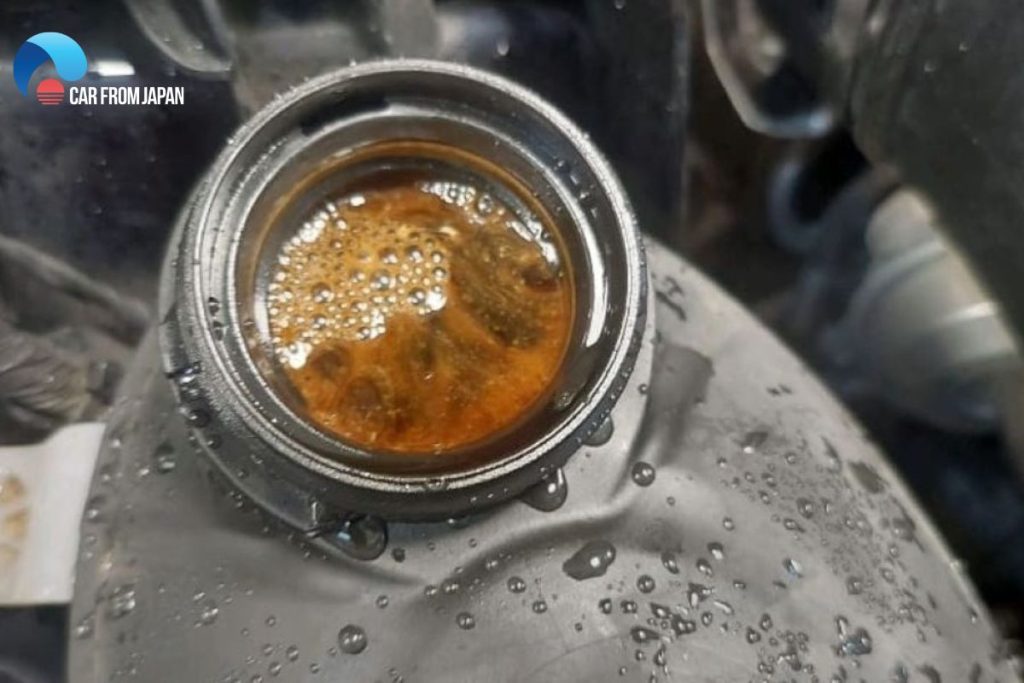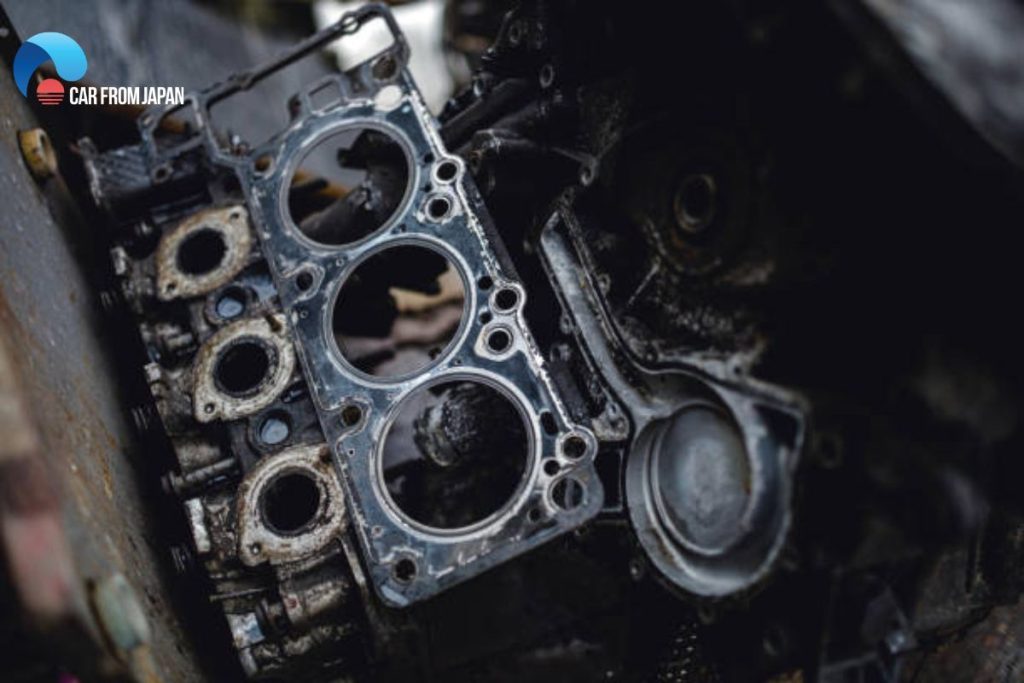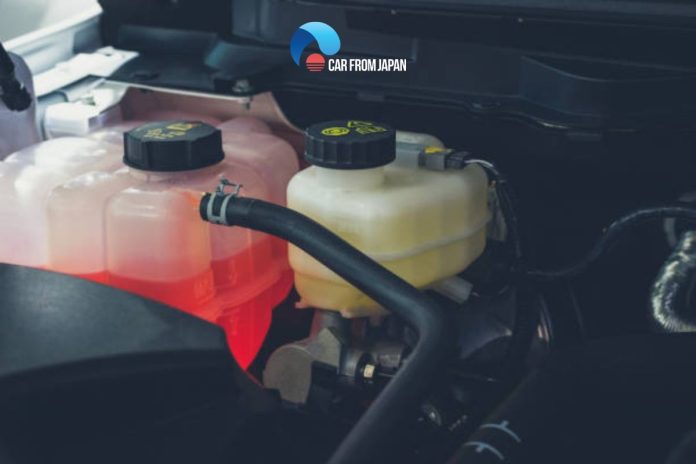Your car’s engine keeps its oil and coolant in separate, sealed systems for very good reasons – they do very different jobs. So, when you discover oil in coolant reservoir, it’s an immediate red flag that these systems are no longer properly separated. This contamination typically indicates a significant internal engine issue that can lead to severe damage if left unaddressed. We’re here to help you understand the common causes of this issue and the available solutions.
Contents
What Does Oil in Coolant Look Like?
Oil and coolant are two different substances, stored in separate parts of a vehicle. The oil minimizes the friction between the internal car parts. The coolant or the cooling agent controls the temperature of the engine. These two things should never get mixed. If they do, your car is going to face some serious troubles.
The most common sign of oil in cooling system is the presence of a slimy milky-brown layer in the coolant. There might be an oily sheen on top of the liquid at the early stage of contamination.
Let’s move into the reasons why there is oil in coolant reservoir.

Reasons for Oil Leaking into Coolant
Several components could be responsible for oil in anti freeze.
Damaged head gasket
A broken or damaged head gasket is the prime cause of oil getting into the coolant. You can find this head gasket beside the engine block. It maintains the proper level of air pressure and prevents the engine oil from leaking. However, an overheated engine can blow this head gasket, which results in oil leakage in the coolant reservoir.
Faulty oil cooler
A cracked oil cooler is a common reason for oil leakage. Nowadays, most cars have attached oil coolers, which can get cracked over time or because of overuse. If there is oil in your car’s cooling system, check if the oil cooler has any cracks. If yes, replace it as soon as possible. It doesn’t cost much, so you don’t have to worry about the expenses.
Cracks in the engine block
If you find oil mixing in the coolant reservoir, examine the engine block and look for any cracks. Lack of sufficient oiling and cooling when the engine gets heated, cracks can appear.
An engine block crack is bad news because you have to replace the whole engine. It’s an expensive repair, costing around $5,000.
Defective cylinder heads
Due to the extreme heat generated by the engine, the cylinders and cylinder heads may develop cracks in different places. These cracks let the oil leak and contaminate the coolant.
Changing the entire cylinder is necessary if there is any crack on the cylinder heads. Repair costs will vary depending on the car model.

Oil in Coolant Reservoir: How Dangerous Can It be?
In a nutshell, it is not safe for the oil and the coolant to get mixed. These substances are composed of different elements and serve completely different purposes.
The function of oil is to lubricate the whole engine with its thick consistency. Contrarily, the coolant has water-like consistency and prevents overheating of the car engine by keeping its temperature low.
Once the coolant gets contaminated by the leaking oil, it cannot keep the engine cool. An overheated engine can create various problems, leading to expensive repairs.
Solutions for Oil Mixed with Coolant
Oil in radiator fluid means you will face several problems when driving the car. Engine overheating will be a common issue, and smoke can come out from under the hood in severe cases. There could also be issues like a clogged radiator, failure of radiator, and a faulty temperature sensor.
What to do? Keep calm, and unless you are a car engine expert, immediately call an experienced mechanic. The mechanic will inspect your car engine thoroughly and suggest a repair plan. A professional diagnosis is the only way to find out the root causes of this problem and fix them.
No matter the cause, once the primary mechanical fault is repaired, the following steps are essential:
- Thorough cooling system flush: The entire cooling system (radiator, engine block, heater core, hoses) must be flushed multiple times with a quality cooling system flush chemical and then clean water to remove all traces of oil contamination. Residual oil can degrade rubber hoses, cause blockages, and lead to future overheating problems.
- Oil and filter change: It’s wise to change the engine oil and filter, as coolant may also have contaminated the oil, compromising its lubricating properties.
Wrapping Up
Oil in coolant reservoir can cause severe problems to your car and put its efficiency at risk. Identifying the cause at the initial stage will save both time and money. Hence, we suggest that you keep a sharp eye on your car’s performance and do its checkup. Whenever you can identify trouble, contact a professional mechanic to have a look at your engine.



